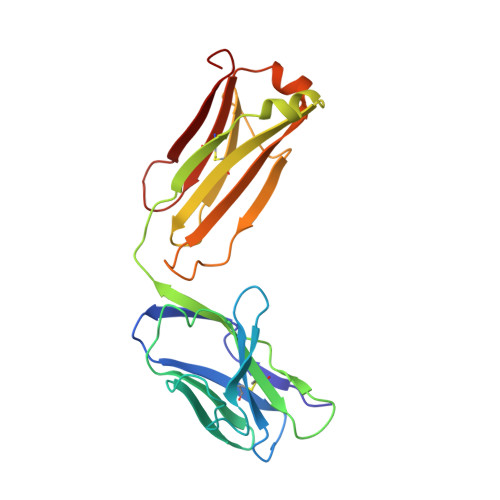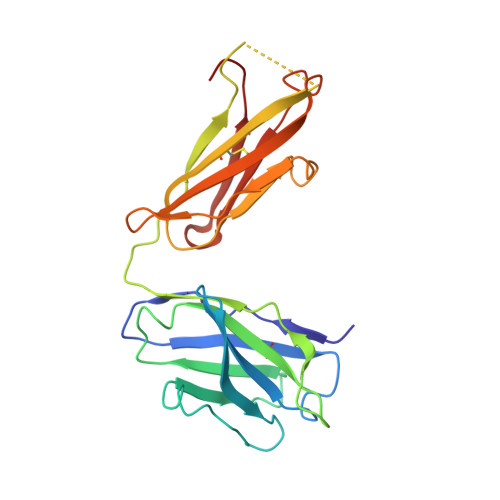Role of Antibody Paratope Conformational Flexibility in the Manifestation of Molecular Mimicry.
Krishnan, L., Sahni, G., Kaur, K.J., Salunke, D.M.(2008) Biophys J 94: 1367
- PubMed: 18032557
- DOI: https://doi.org/10.1529/biophysj.107.108654
- Primary Citation of Related Structures:
2V7H - PubMed Abstract:
Molecular mimicry is a recurrent theme in host defense processes. The correlation of functional mimicry with the structural features of the antibody paratope has been investigated, addressing the consequences of mimicry in host immune mechanisms. Two anti-mannopyranoside antibodies, 1H7 and 2D10, representing the possible extremes of the recognition spectrum with regard to peptide-carbohydrate mimicry were examined. Crystallographic and molecular dynamics simulation analyses established correlation between the antibody flexibility and the manifestation of mimicry. It was evident that monoclonal antibody (mAb) 1H7, which has a narrow specificity in favor of the immunizing antigen, exhibited structural invariance. On the other hand, the antigen-combining site of 2D10, the mimicry-recognizing antibody, showed substantial divergence in the complementarity determining region loops. The docking of mannopyranoside within the antibody paratope revealed multiple modes of binding of the carbohydrate antigen in mAb 2D10 vis à vis single docking mode in mAb 1H7, which overlapped with the common monosaccharide binding site defined in anti-carbohydrate antibodies. The presence of additional antigen binding modes is perhaps reflective of the utilization of conformational flexibility in molecular mimicry. A relatively broader recognition repertoire--attributable to paratope flexibility--may facilitate the recognition of altered antigens of invading pathogens while the antibodies with narrow recognition specificity maintain the fidelity of the response.
- National Institute of Immunology, New Delhi, India.
Organizational Affiliation:

















